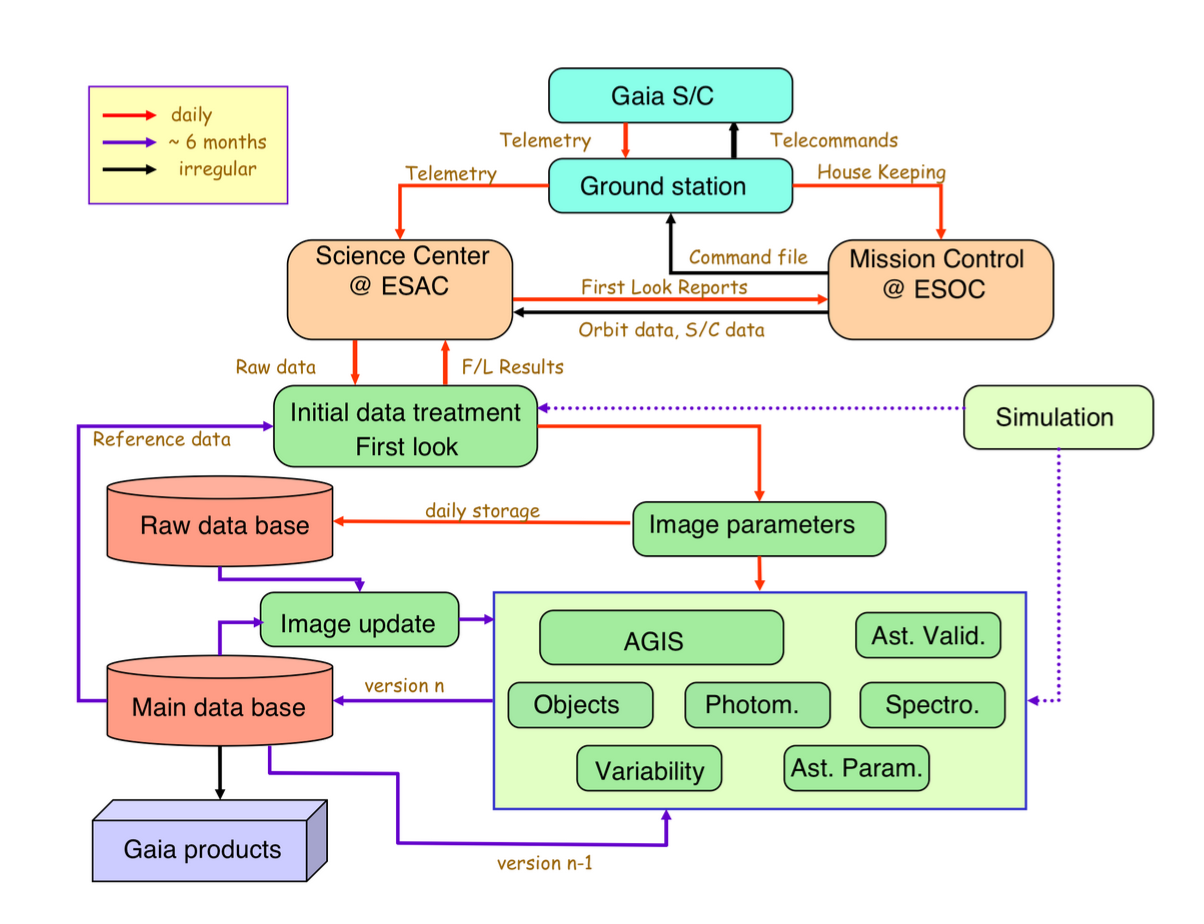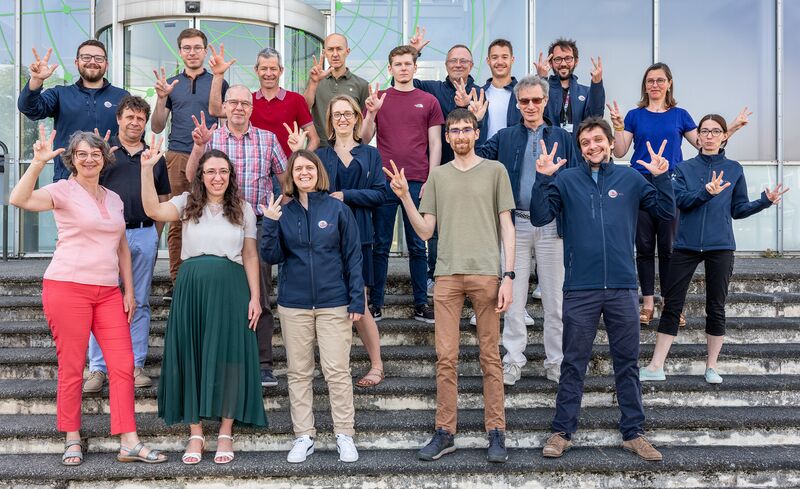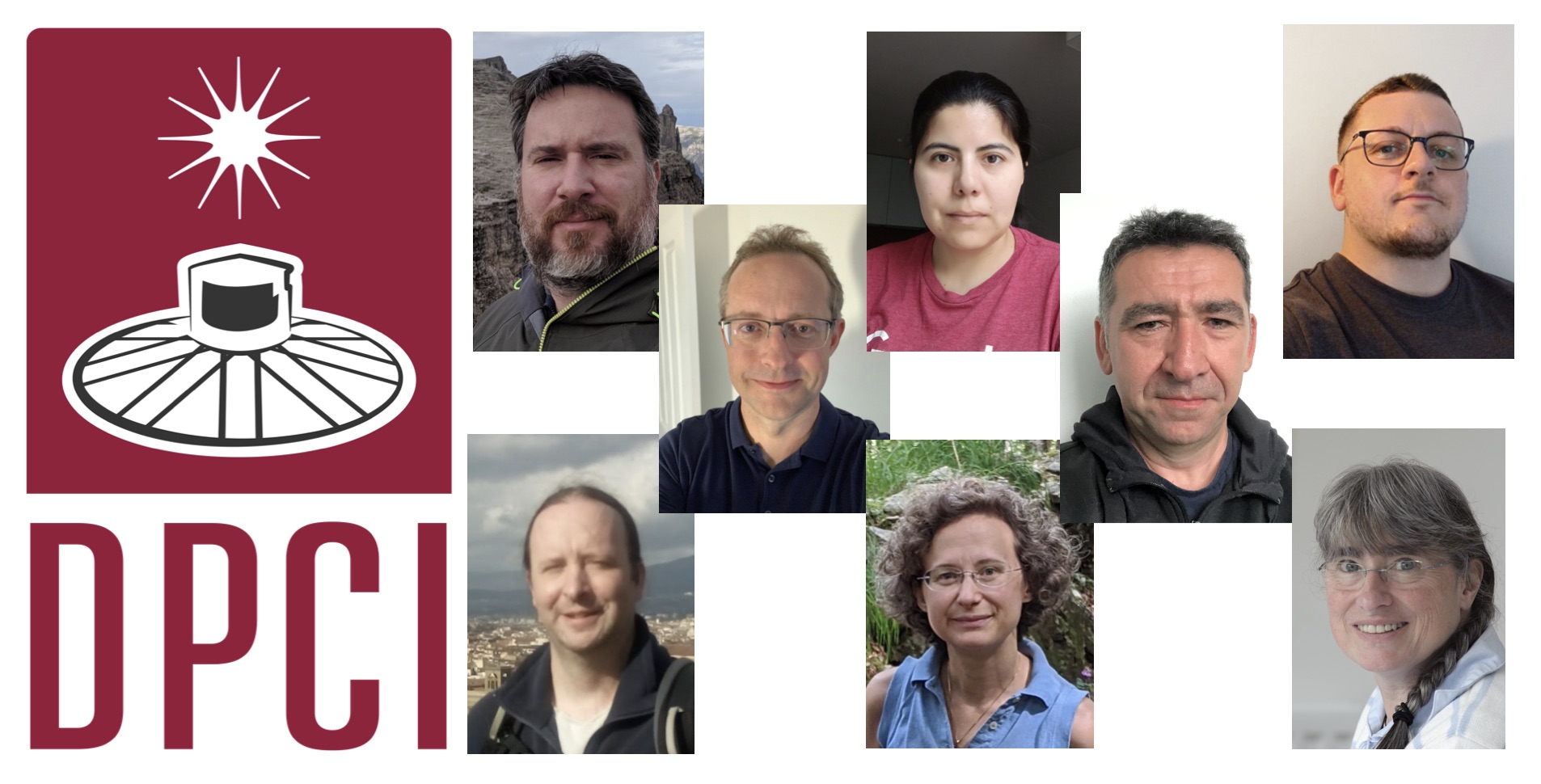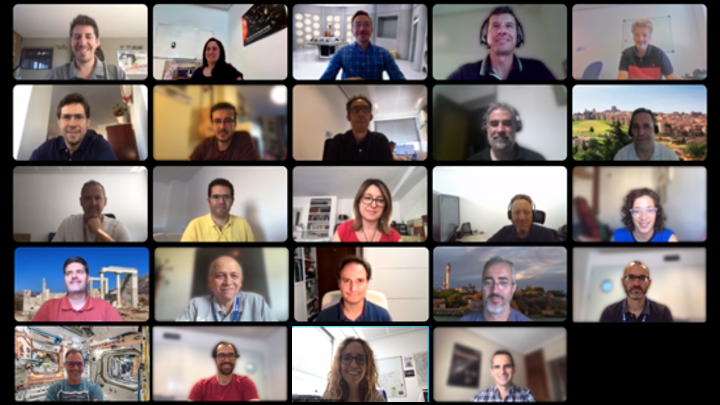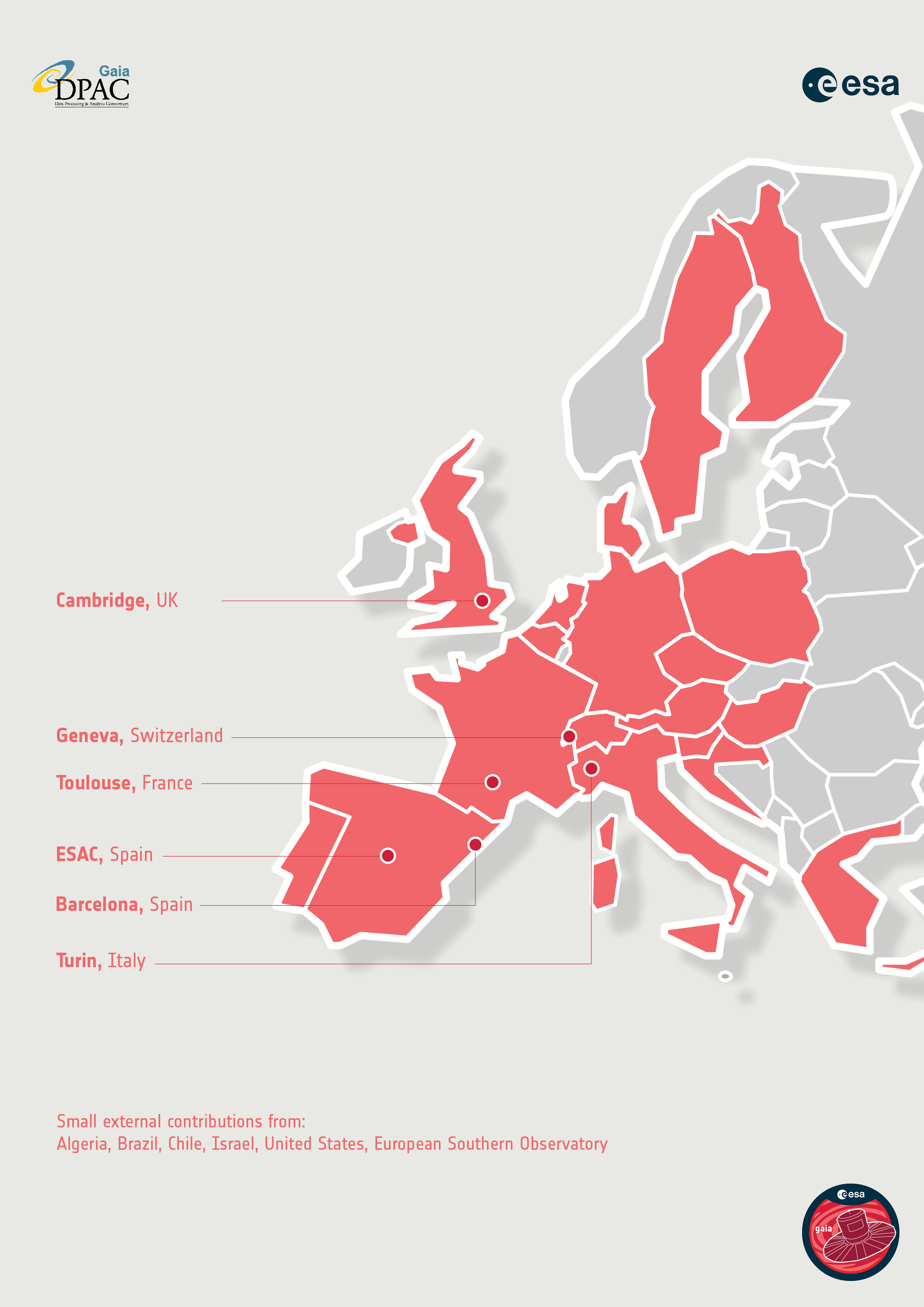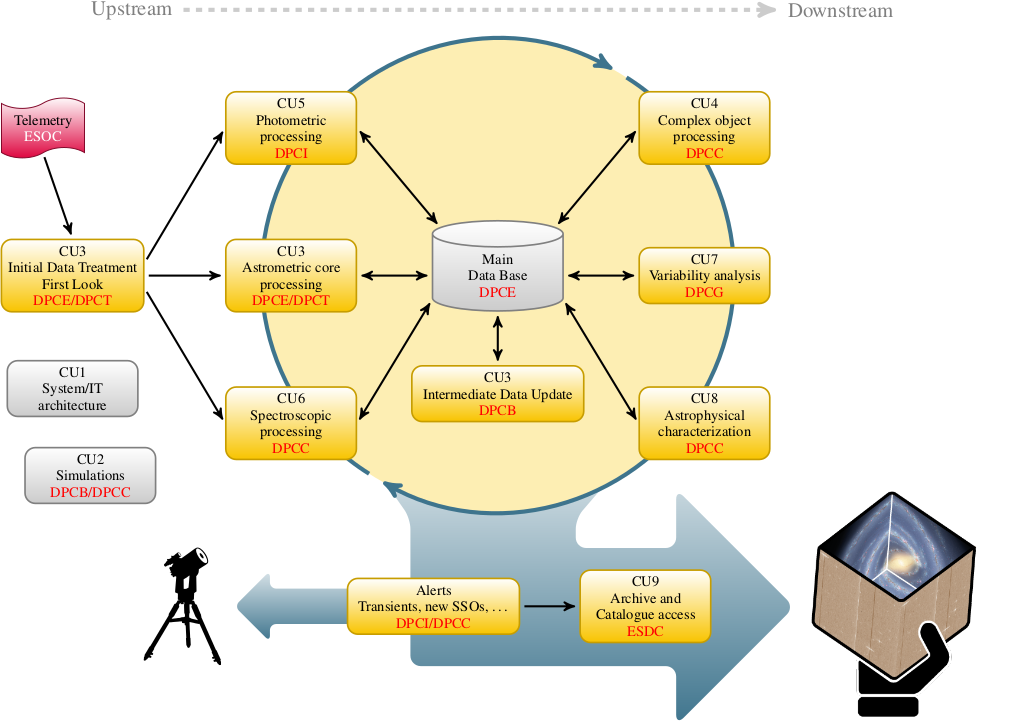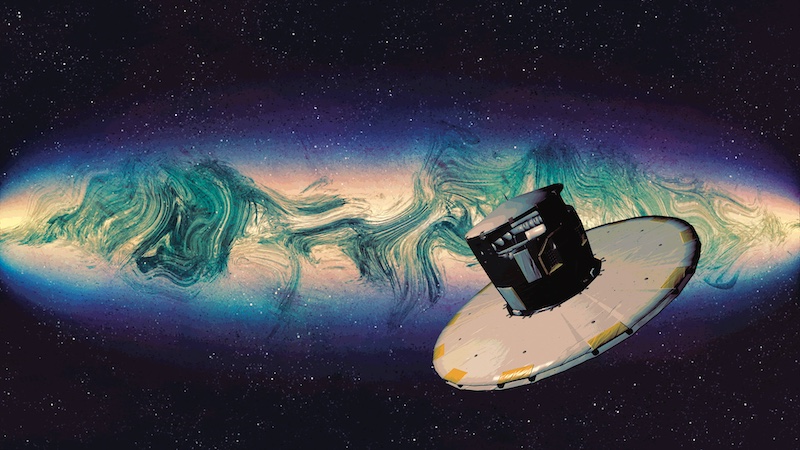How did you produce the data for this star? - Gaia
How did DPAC produce the data for this star?
Insight in the pipelines, calibrations and organisation of Gaia DPAC
With each data release, a full description is given of the path the data made after coming down from the spacecraft as raw data until it reaches the archive as scientific data products for distribution. These descriptions are largely provided in the data release documentation and are complemented with a set of release papers describing specific processing steps or validation activities. The release papers consist of an overview paper summarising the release, a list of processing papers produced by the various coordination units and a set of performance verification papers to demonstrate the quality of the data without going into too much detail.
Overview of the data flow in the Gaia science ground segment, taken from the data release documentation.
The Gaia Data Processing Centres
There are 6 Gaia data processing centres: at the Institute of Astronomy in Cambridge (United Kingdom), at the University of Geneva in Switzerland, at the Barcelona Supercomputing Centre in Spain, at the University of Torino in Italy, at the Centre National d'Etudes Spatiales in Toulouse (France) and at the European Space Astronomy Centre in Madrid, Spain. Each data processing centre is responsible for a specific part of the processing and collaborates with the rest of the Gaia consortium to ensure the best scientific data products are obtained.
Data Processing Centre @ CNES
© CNES 2022 Overview of the ground segment of the Gaia data processing done at CNES. Credit :Burgain Claire, Debeir Clément - SapiensSapiens
Gaia CNES Group picture. Credits: ESA/Gaia/DPAC/CNES
Data Processing Centre @ IoA
Located at the Institute of Astronomy (University of Cambridge, UK), DPCI is responsible for the integration and operations of several pipelines developed in coordination with CU5: PhotPipe, producing the photometric (magnitudes and fluxes in the G, GBP and GRP bands) and spectro-photometric (the BP and RP low-resolution spectra) data, AlertPipe, mining daily the acquired data to find and classify objects that have photometrically changed and SEAPipe, stacking multiple observations of all sources to detect faint and near-by sources thus effectively increasing the Gaia resolution and removing biases due to these previously undetected companions. In the past years, DPCI has embraced advanced techniques to ensure performance, robustness and reliability of these software systems and their products.
Data Processing Centre @ ESAC
One of the DPAC Data Processing Centres, DPCE, is located at the European Space Astronomy Centre (ESAC) of the European Space Agency (ESA) near Madrid. Its activities include the initial data processing of the Gaia science data, payload commanding, core astrometric processing, generation of the Gaia archive and the support to some Coordination Units. The team is made up of members from the Data Processing Centre, the Coordination Units CU1, CU3, CU7, CU9 and the DPAC Project Office.
Data Processing Centre @ Barcelona
Below a video is provided that was produced for Gaia's Early Data Release 3 in December 2020. The discussed content is still relevant for Gaia's full data release 3 and give an insight in the work performed at the data processing centre in Barcelona, Spain.
Data Processing - Carme Jordi - Gaia science team member. Credit: ESA/Gaia/DPAC. Published here.
Data Processing Centre @ Geneva and Torino
The last two data processing centres are located in Geneva (Switzerland) and Turin (Italy)
Gaia DPAC
The Gaia Consortium started its activities in 2006, to prepare the processing such that, when the Gaia spacecraft was launched in 2013 and became operational in July 2014, the data could immediately go through its initial data treatment and flow down through the different processing pipelines.
Inside Gaia's billion pixel camera
Video published right before Gaia was launched on 19 December 2013, explaining how Gaia measures stars. Fully described here. Credit: ESA
© CNES 2022 Screenshot of the video above providing an overview of the ground segment of the Gaia data processing done at CNES. Credit :Burgain Claire, Debeir Clément - SapiensSapiens .
Credits: ESA/Gaia/DPAC
Story and contents by Tineke Roegiers, CNES/Chantal Panem, IoA/Francesca De Angeli, DPCB/Carme Jordi, DPCE/Rocio Guerra
Published: 13 June 2022
- Removed a total of (37) style text-align:center;
- Removed a total of (3) style text-align:justify;
- Removed a total of (1) style font-style:italic;
More Gaia DR3 stories?
Where are the stars? How far away are they? How bright are the stars?
What colour do they have? What are the stars made of?
Where do they go? Where do they come from? Do they approach us? Do they move away?
Did something move in front of the star? What is in between the stars?
How big, warm, old, ... are they? How do they Blink?
Is it a double star? Do they go boom? Is it a galaxy?
Is it a solar system object? Is it a quasar?
Who created the data? Can I Use Gaia data with other observatories?
How did DPAC produce the data for this star? Where is the data?
-
ESA's press release of Gaia Data Release 3
-
Gaia's Early Data Release 3 stories
-
ESA's press release of Gaia Early Data Release 3
- Removed a total of (16) style text-align:center;








































 Sign in
Sign in
 Science & Technology
Science & Technology
